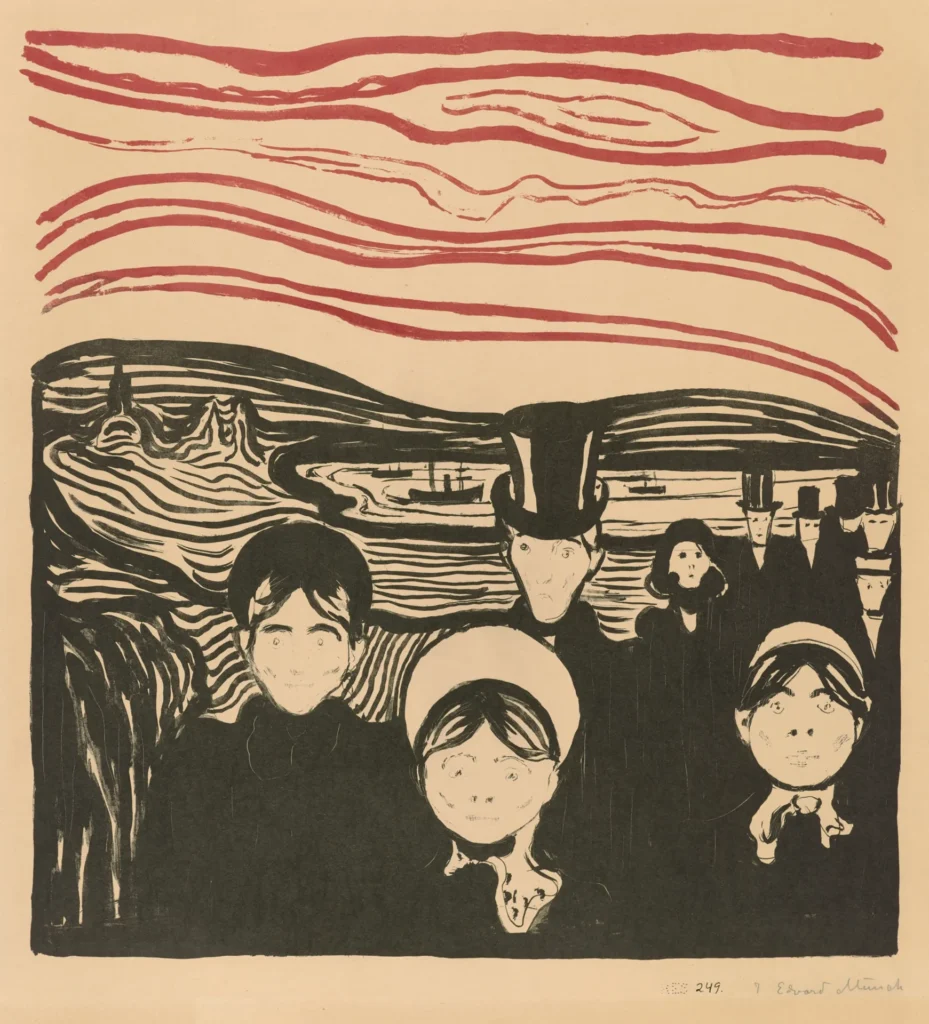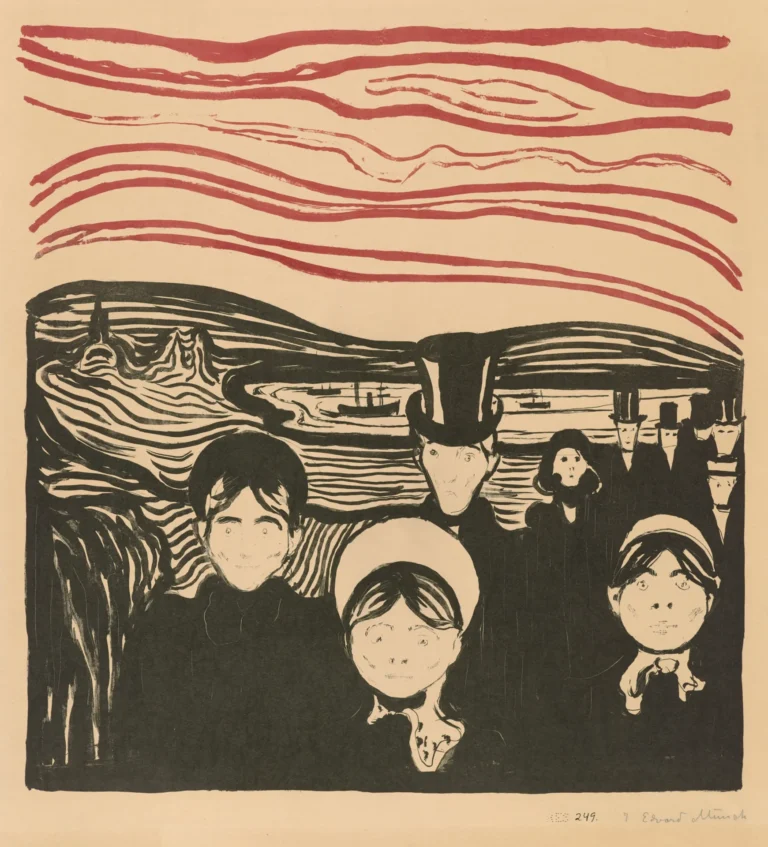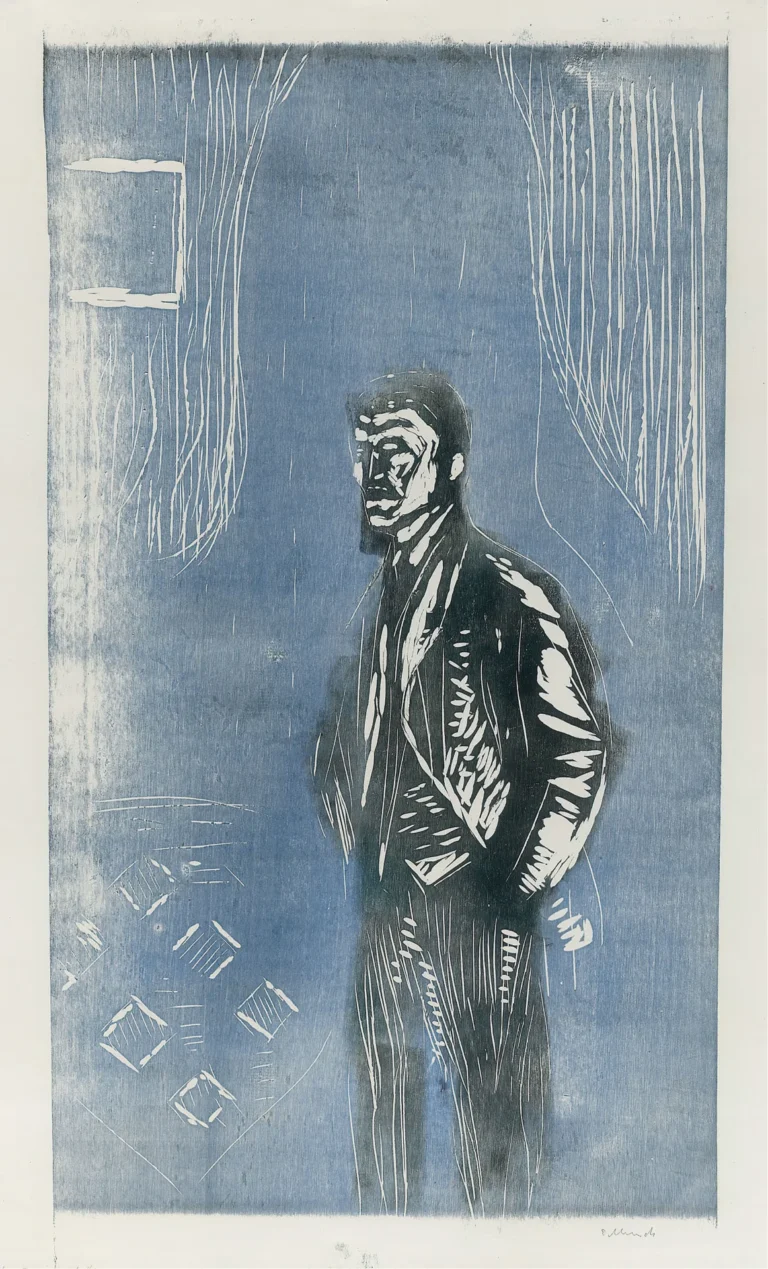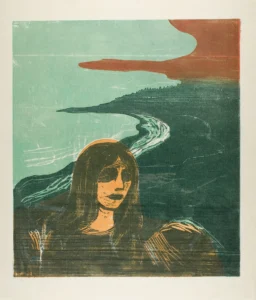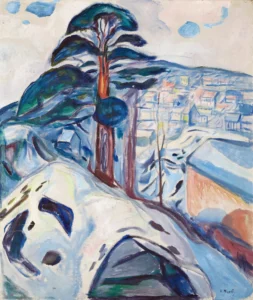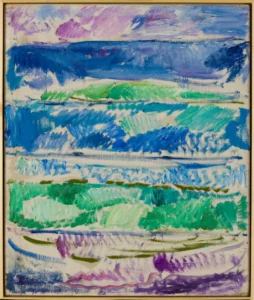Angst (1896)
Angst (1896) is an evocative work by Edvard Munch that explores the themes of collective fear and despair. The lithograph captures a scene of individuals on a jetty against a turbulent backdrop of water and swirling skies, resonating with existential angst. Its emotional depth reflects Munch's personal experiences intertwined with existential philosophy, showcasing his artistic evolution following the acclaimed The Scream.
1896
About the Artwork
Created in 1896, Angst revisits the psychological and emotional themes that Munch is known for, building upon the foundations laid by his earlier work, The Scream. The artwork portrays a group of figures stranded in a moment of collective dread, mirroring Munch's own experiences with loss and anxiety. His philosophical influences from thinkers like Kierkegaard and Nietzsche are evident, enriching the work with deeper implications of existential despair. The stark contrasts and graphic techniques used demonstrate Munch’s innovative approach, establishing him as a pivotal figure in the transition to modern art.
Did You Know
Liked what you see? Add it to your collection.
Enjoyed reading? Share it.
... continued
The artwork Angst by Edvard Munch, created in 1896, is closely related to his earlier and more famous work, "The Scream" (1893). Here are some key points about Angst:
Medium and Technique
In 1896, Munch revisited the theme of Angst through print mediums, specifically lithographs and woodcuts. This version was created two years after the original oil-on-canvas painting titled "Anxiety" (1894).
Composition and Themes
The composition of Angst (1896) echoes elements from "The Scream." It features a group of people on a jetty, with a lake, boats, and a church in the background. Unlike "The Scream," which focuses on the horror experienced by a single isolated individual, Angst conveys collective despair and anxiety. The work is characterized by gloomy hues and intense, swirling lines that define and embrace the land, sea, and sky.
Emotional and Philosophical Context
Angst reflects Munch's exploration of anxiety, anguish, and fear, themes that were central to his work and influenced by philosophers such as Kierkegaard and Nietzsche, as well as playwrights like Strindberg and Ibsen. Munch's personal experiences, including the loss of his mother and sister to tuberculosis, also deeply influenced his depiction of these emotions.
Artistic Style and Impact
Munch's use of graphic techniques in Angst emphasizes the abstract conception and heightens the emotive forcefulness of the work. The woodcut and lithograph versions, particularly those on red-colored paper, highlight the expressive ground and the white features rendered visible through the subtractive method.
Exhibitions and Legacy
Angst has been featured in various exhibitions that highlight Munch's contribution to Expressionism and his influence on 20th-century art. For example, it was part of the "Lebenslandschaft" (Landscapes of life) exhibition at the Barberini museum in Potsdam, which showcased how Munch transfigured Nordic landscapes to project his deepest moods.




